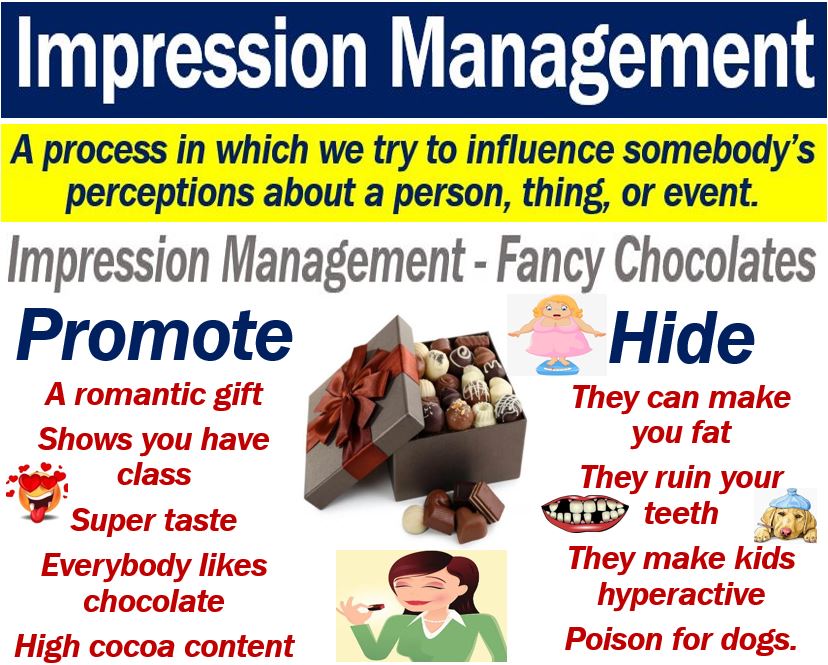Impression management – definition and example
Impression Management is a process in which individuals try to influence the perceptions people have about something, a person, or an event.
Impression management may be a conscious or subconscious process. If you are an impression management professional, you attempt to influence the observations and opinions that consumers have of your products.
Put simply; effective impression management boosts sales.
In most cases, people who manage impressions are trying to align other people’s perceptions with their goals.
We use impression management a lot in business. However, we also use it in everyday life. We use it with our friends and work colleagues. We also use it with our family members.
The rise of digital media has amplified the reach and complexity of impression management, enabling individuals and businesses to craft and curate their image across a global audience
This digital expansion calls for a balance between strategic presentation and authenticity, as audiences increasingly value genuineness alongside professionalism in online personas.

Impression management – teenagers
For example, a teenage girl might only share good things about her boyfriend with her parents. She does this because she wants their perception of him to be a good one.
She knows that if they like him, they have a better chance of remaining together.
BusinessDictionary.com has the following definition of the term:
“A process whereby someone tries to influence the observations and opinions of others about something.”
“In a typical impression management process within a business, a manager might attempt to regulate and control information n their interactions with staff or the general public.”
The manager controls and regulates information because he wants to give people the most favorable impression of the company.
Managing impressions in business
The most common kind of impression management in business is the presentation of merchandise, i.e., advertising. Advertising is the business of attracting consumers’ attention and encouraging them to buy something.
Every business in the world, if it aims to thrive, markets its products in the best possible light. If I sell chocolate cakes, for example, I focus on their delicious taste and wholesome ingredients.
I am definitely not going to focus on how chocolate cakes can make people fat and ruin their teeth.
Managing impressions represents a major part of marketing and advertising executives’ duties. Their job is to create impressions in the minds of consumers, i.e., make people like their products.
Above all, they want these impressions to boost their company’s revenue figures. Revenue refers to the money a business receives from the sale of goods or services.
Not only do marketing and advertising executives create impressions, but they also manage them.
MBASkool says the following regarding business people and impression management:
“(They) project and market their product in the best light possible.”
“Their job is to manage creating an impression in the minds of the consumers in the best possible way which boosts the revenue figures of the organization.”
Example sentences
Below are some example sentences containing the term “membership management” to help you see how we can use the term in context.
- During the job interview, she practiced impression management by carefully selecting stories that highlighted her strengths and aligned with the company’s values.
- The politician’s impression management team worked overtime to shape public perception after the debate, emphasizing his commitment to key policies and his empathetic nature.
- In the realm of social media, impression management becomes crucial as individuals curate their profiles to project a desired image to their friends, family, and potential employers.
- The celebrity’s impression management was evident when she used her platform to promote charitable causes, thereby enhancing her reputation as a socially responsible figure.
- Companies often engage in impression management during a crisis by issuing public apologies and taking corrective actions to restore their brand’s image.
- Teachers also employ impression management techniques, such as dressing professionally and maintaining a calm demeanor, to establish authority and credibility in the classroom.
- In the context of personal relationships, impression management might involve someone downplaying their own problems to avoid burdening others, maintaining a facade of being fine.
Video – What is Impression Management?
This video, from our YouTube partner channel – Marketing Business Network, explains what ‘Impression Management’ means using simple and easy-to-understand language and examples.

